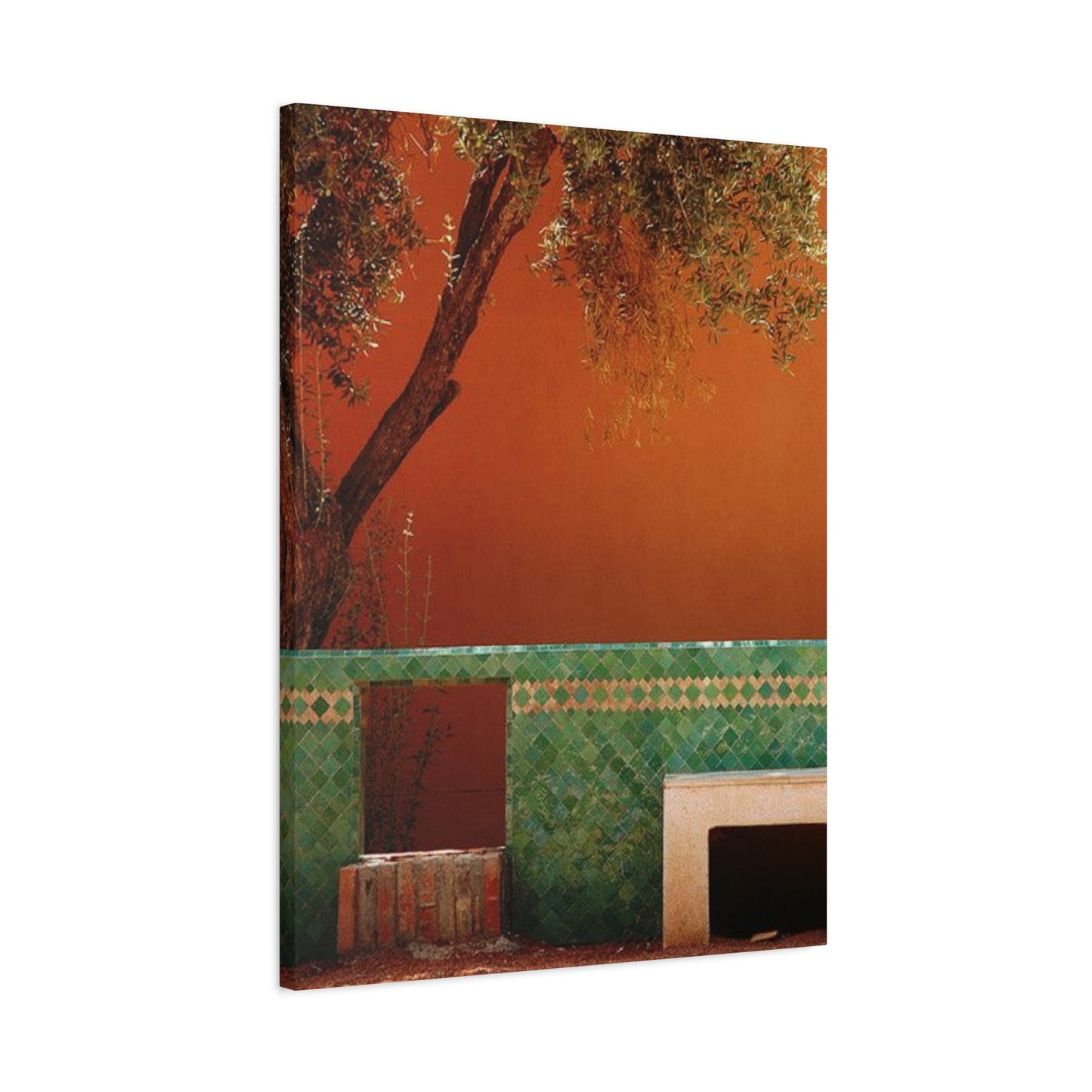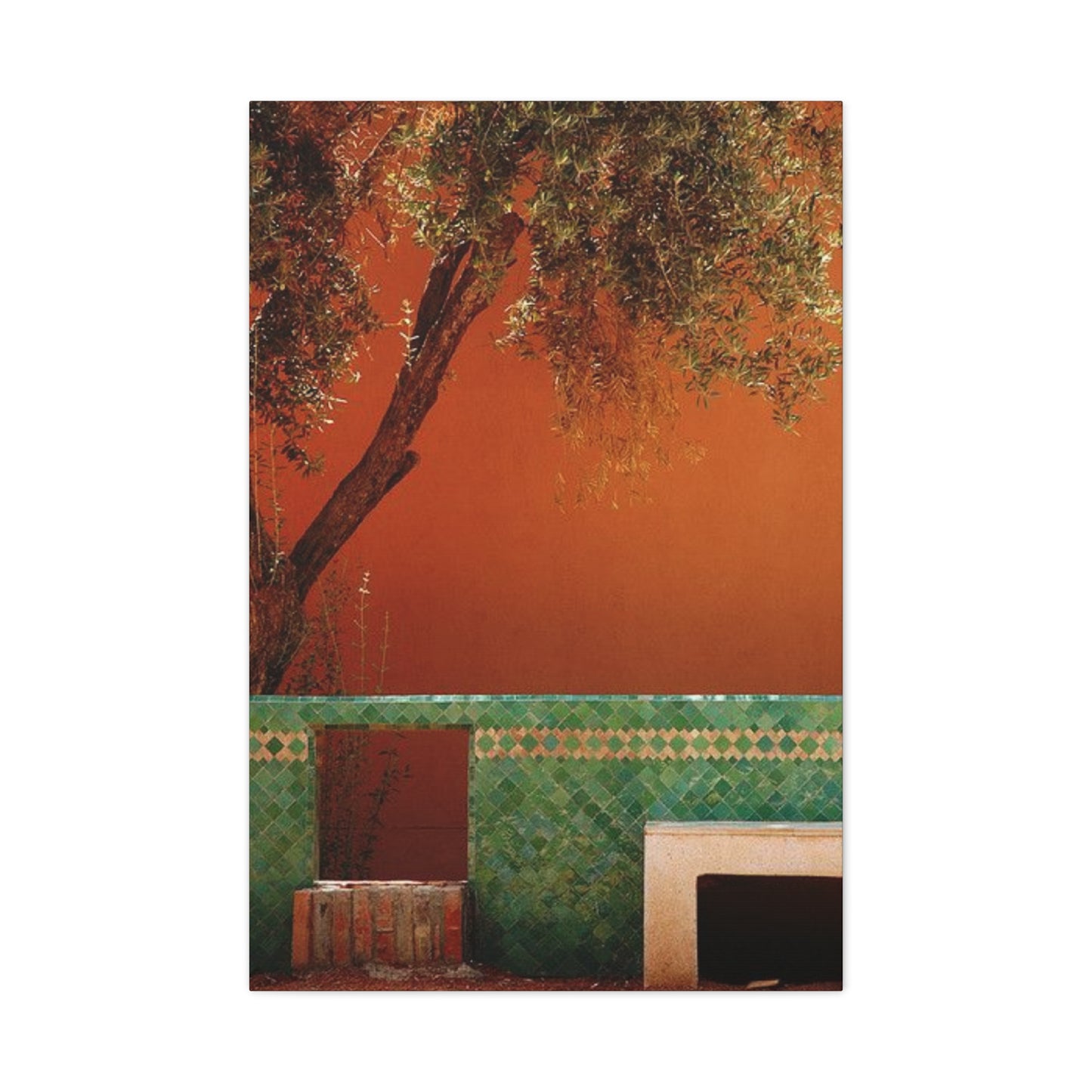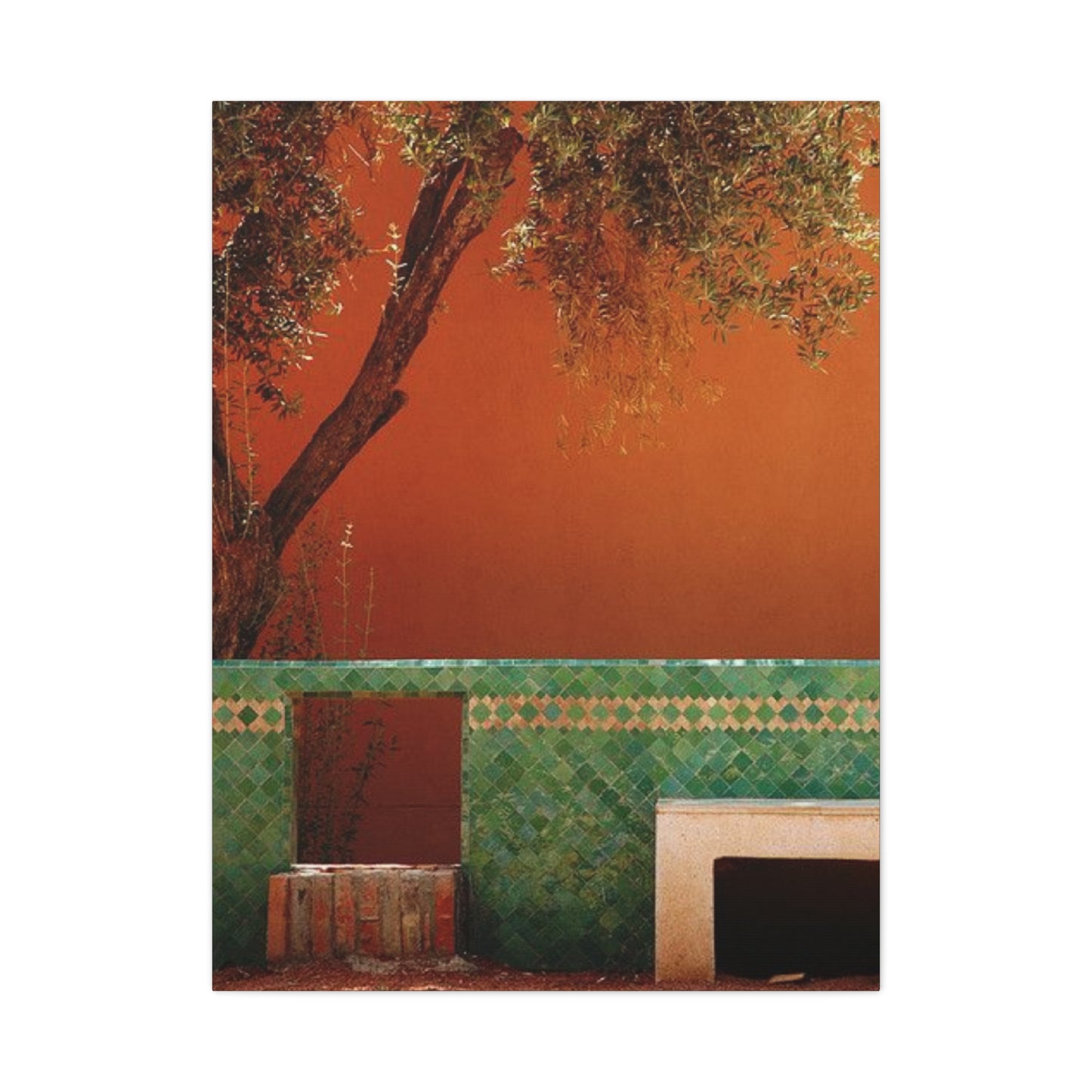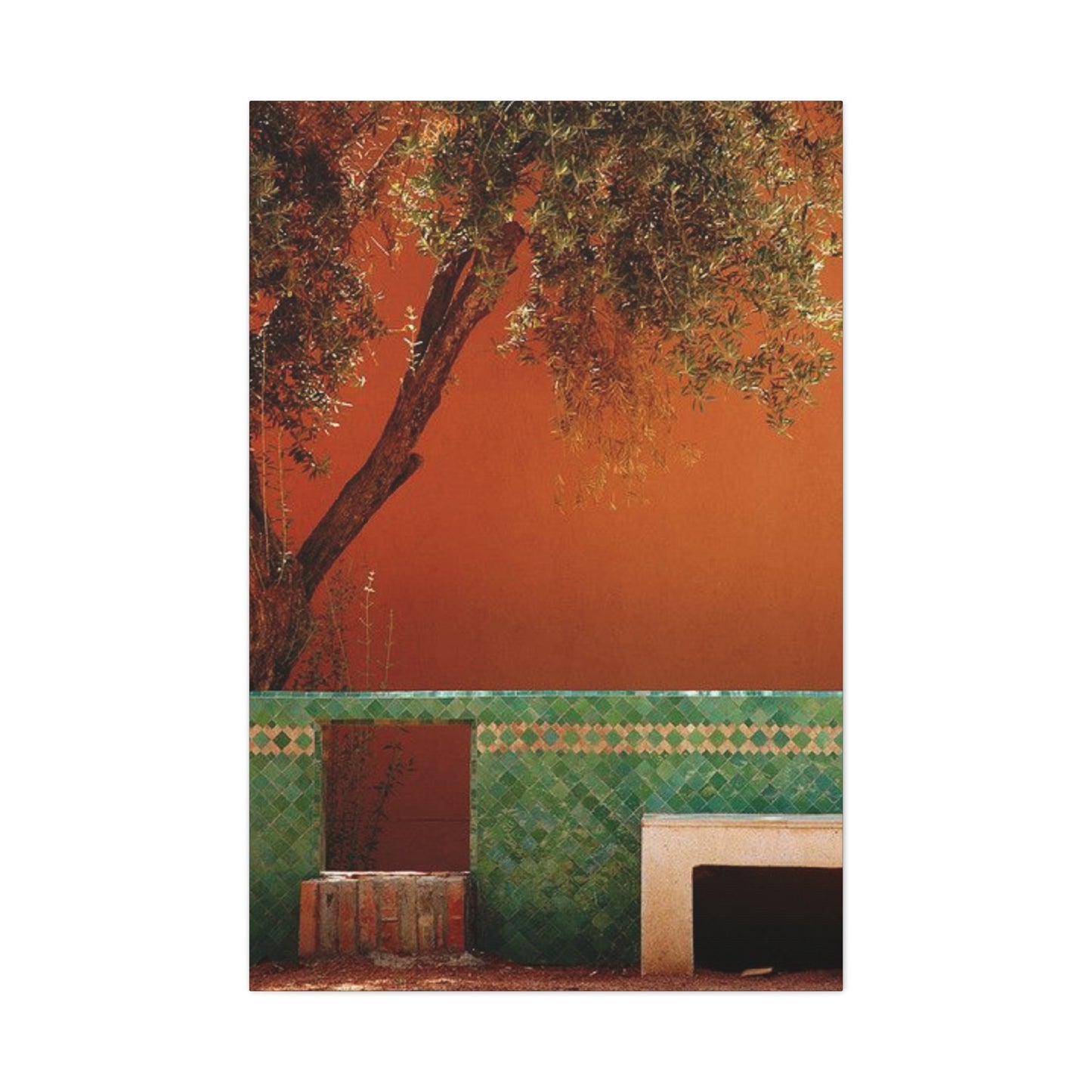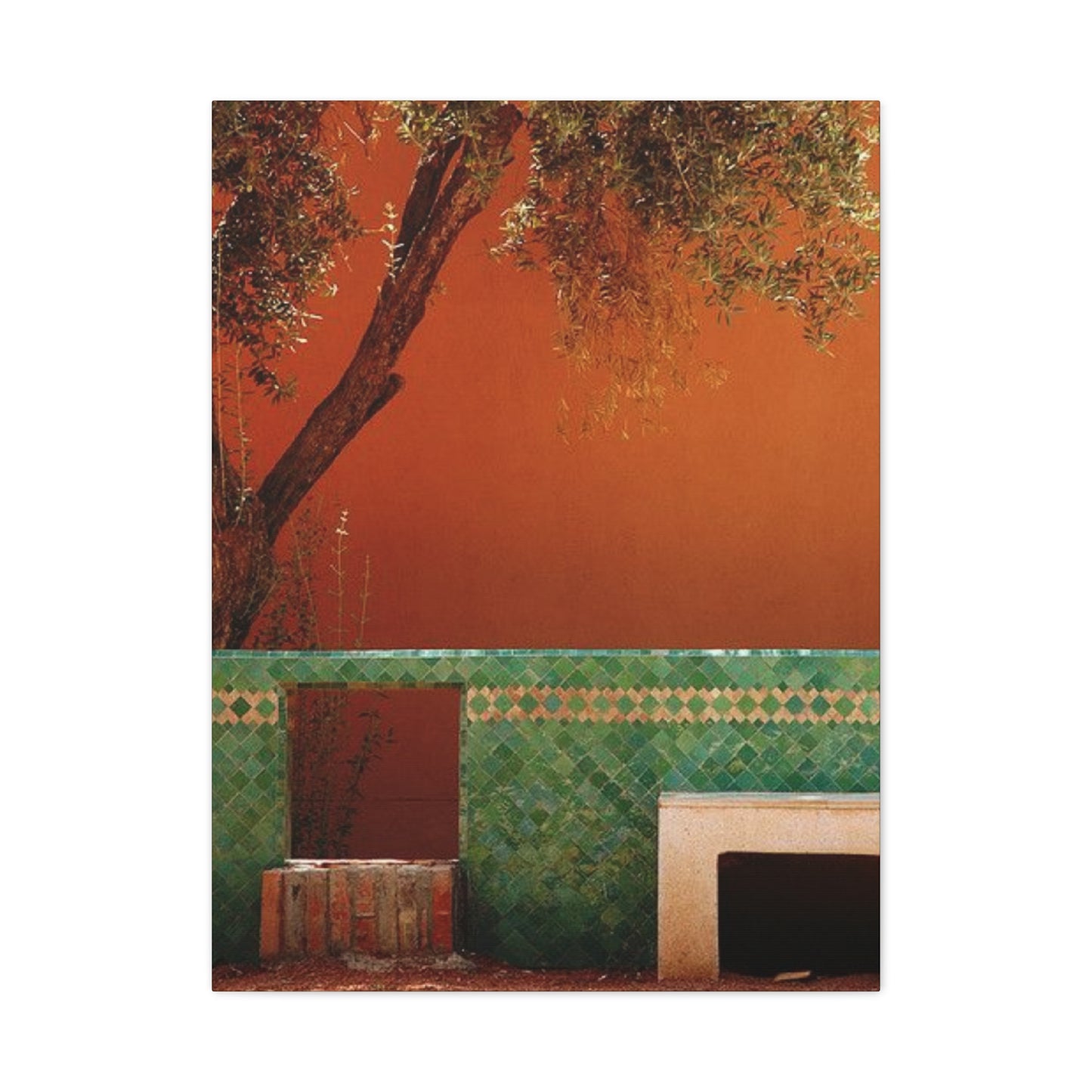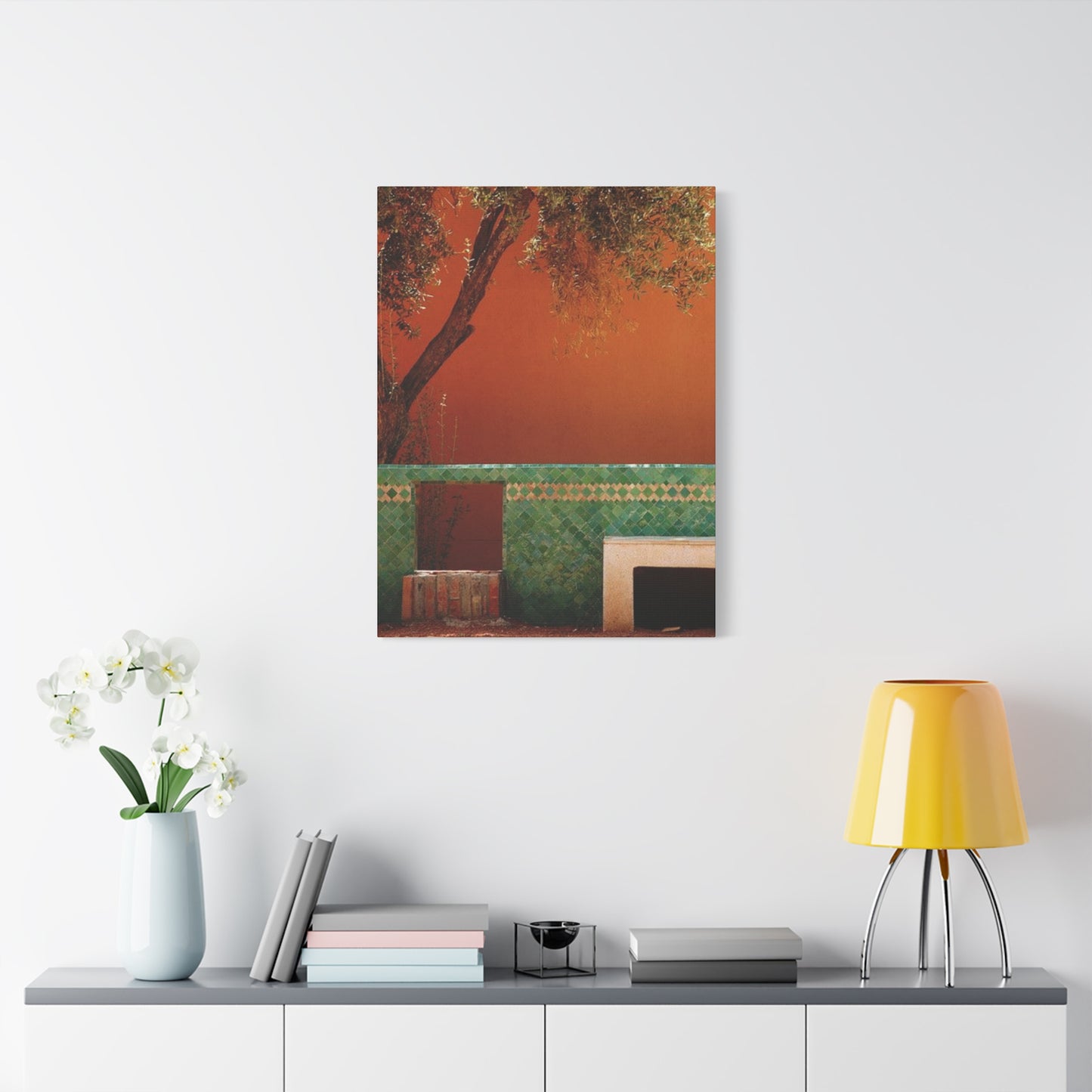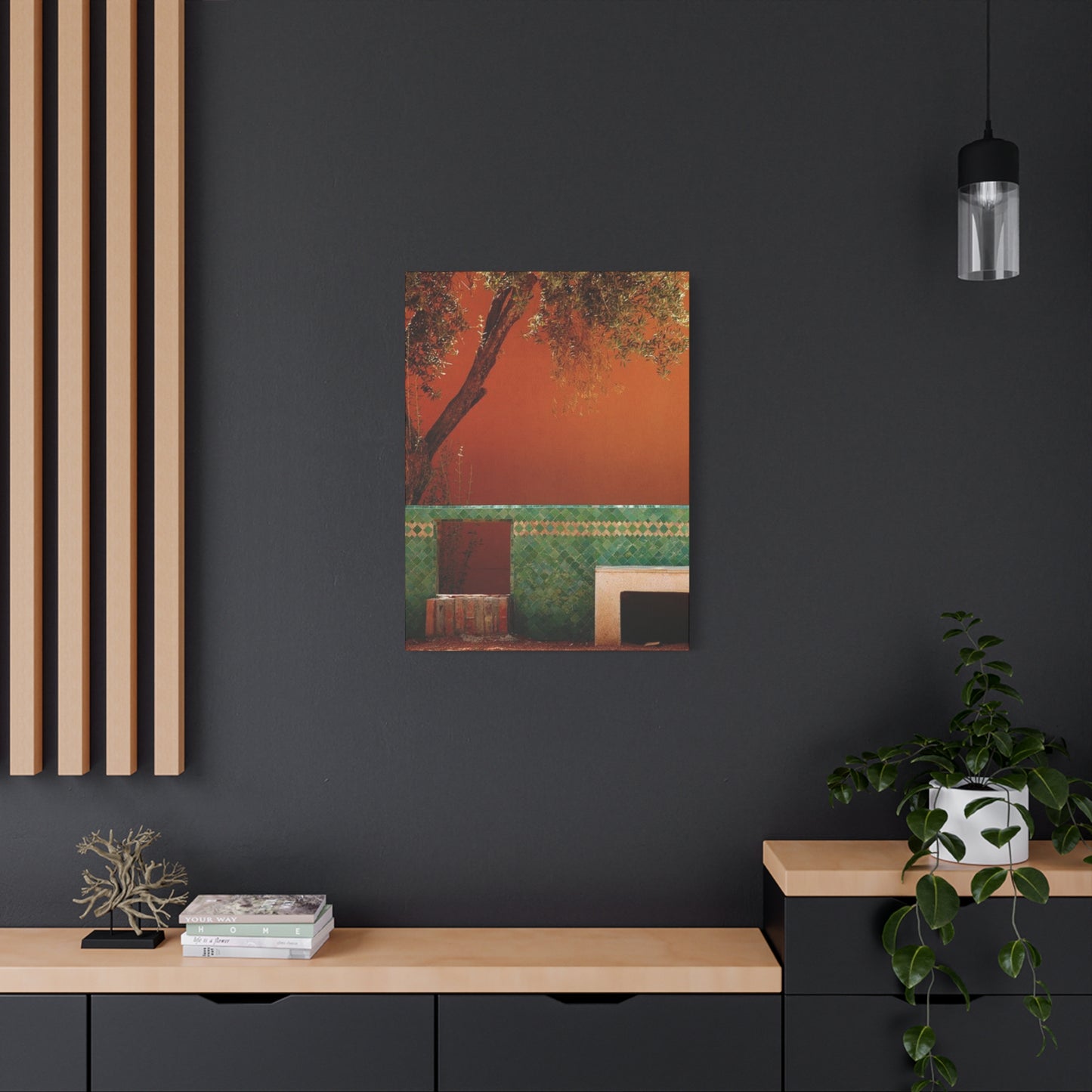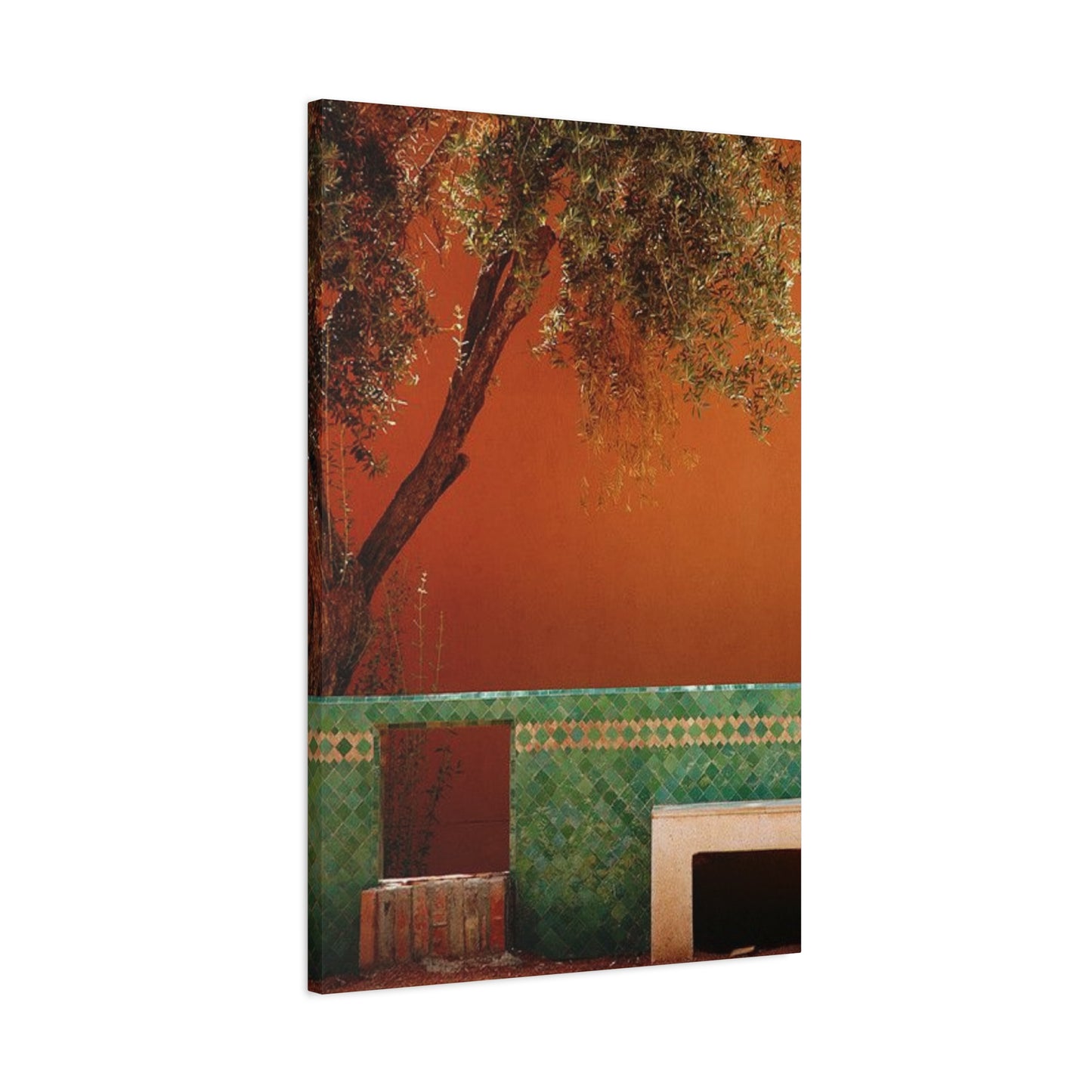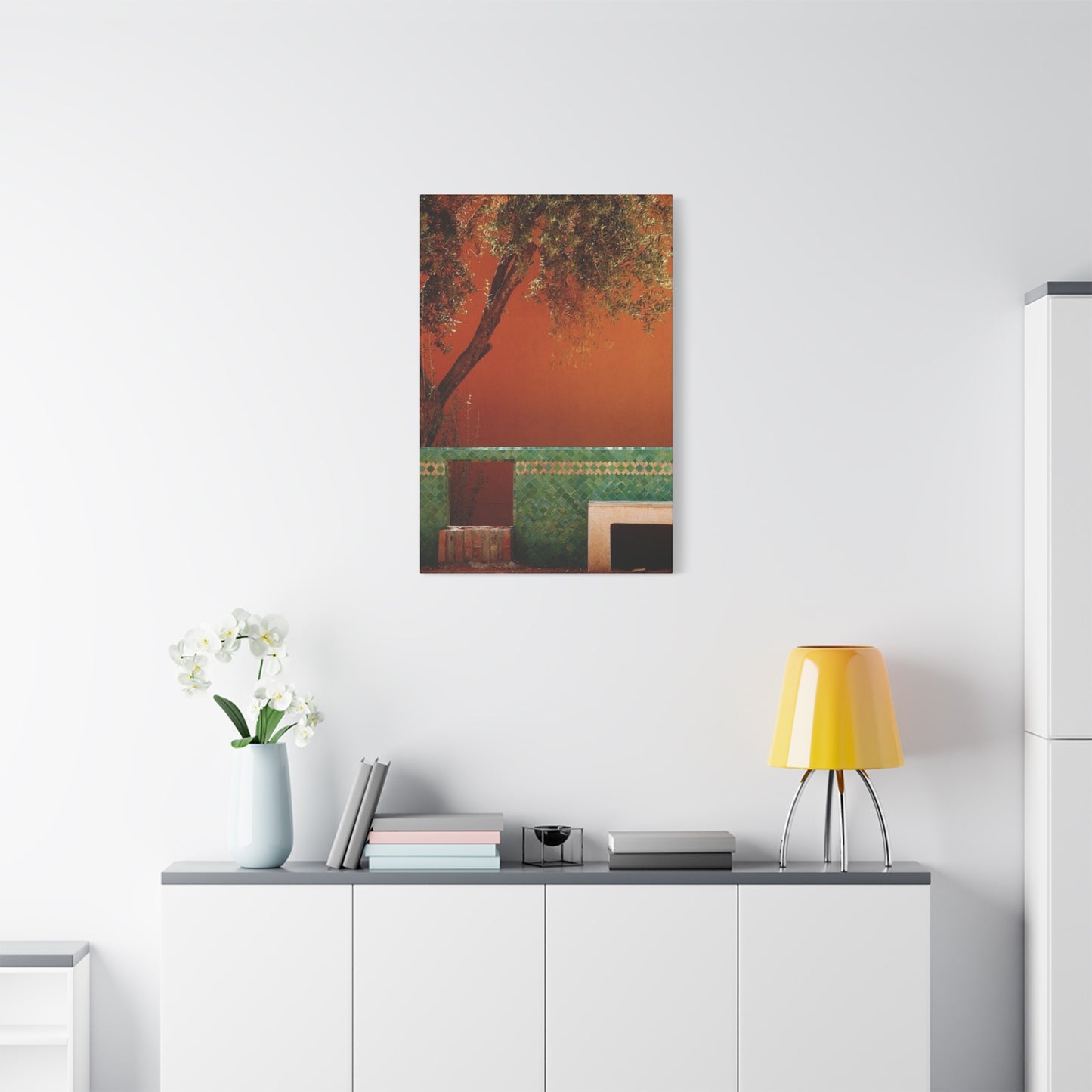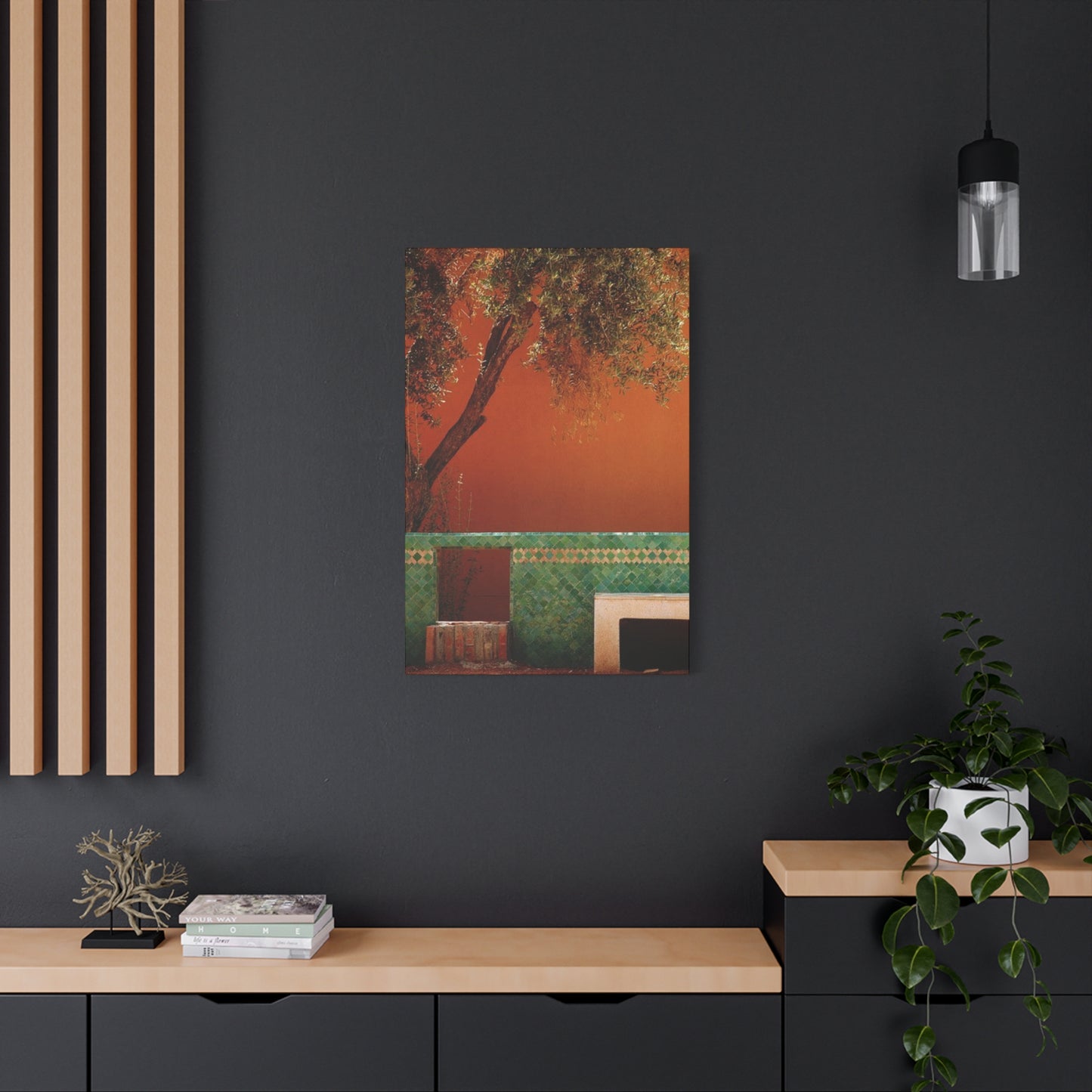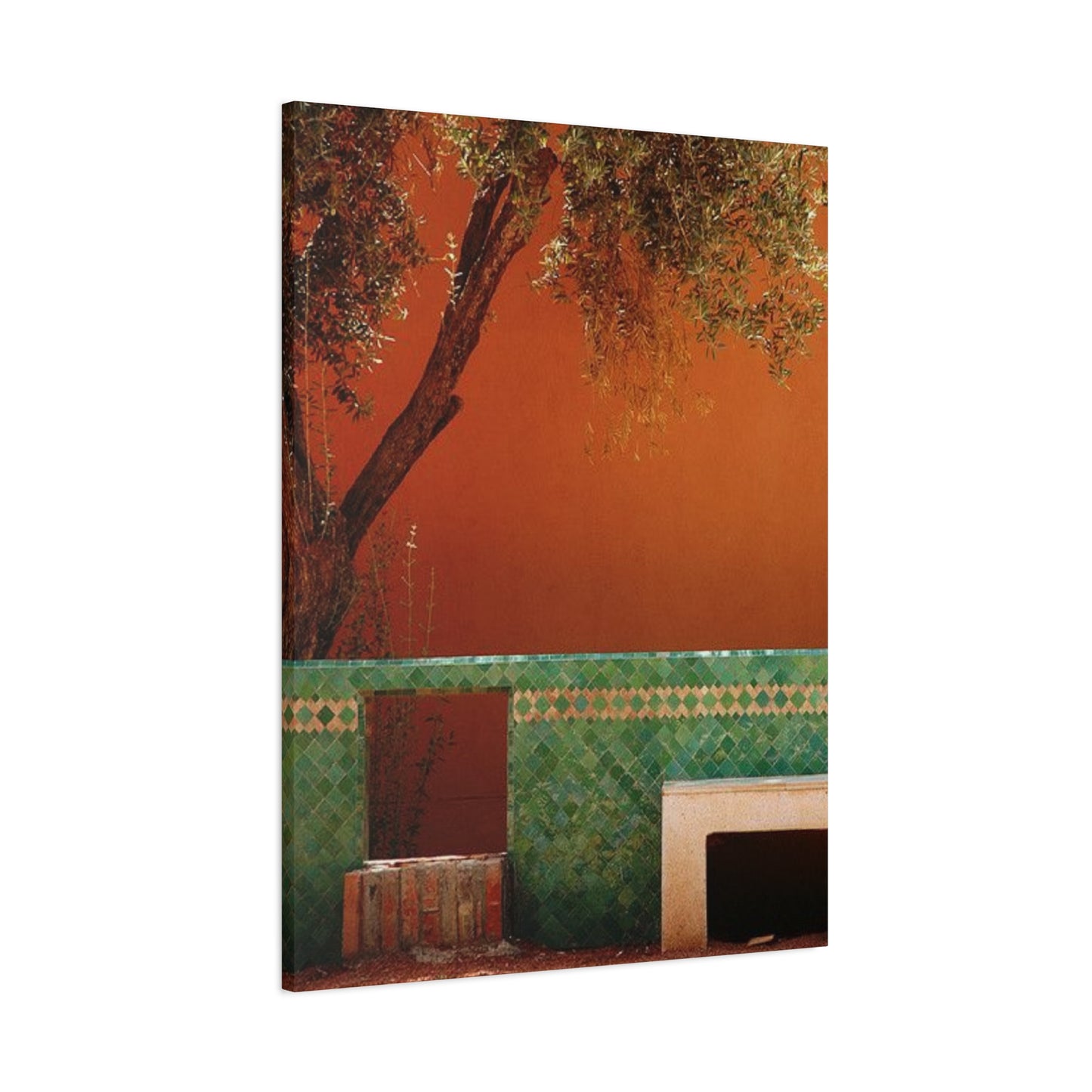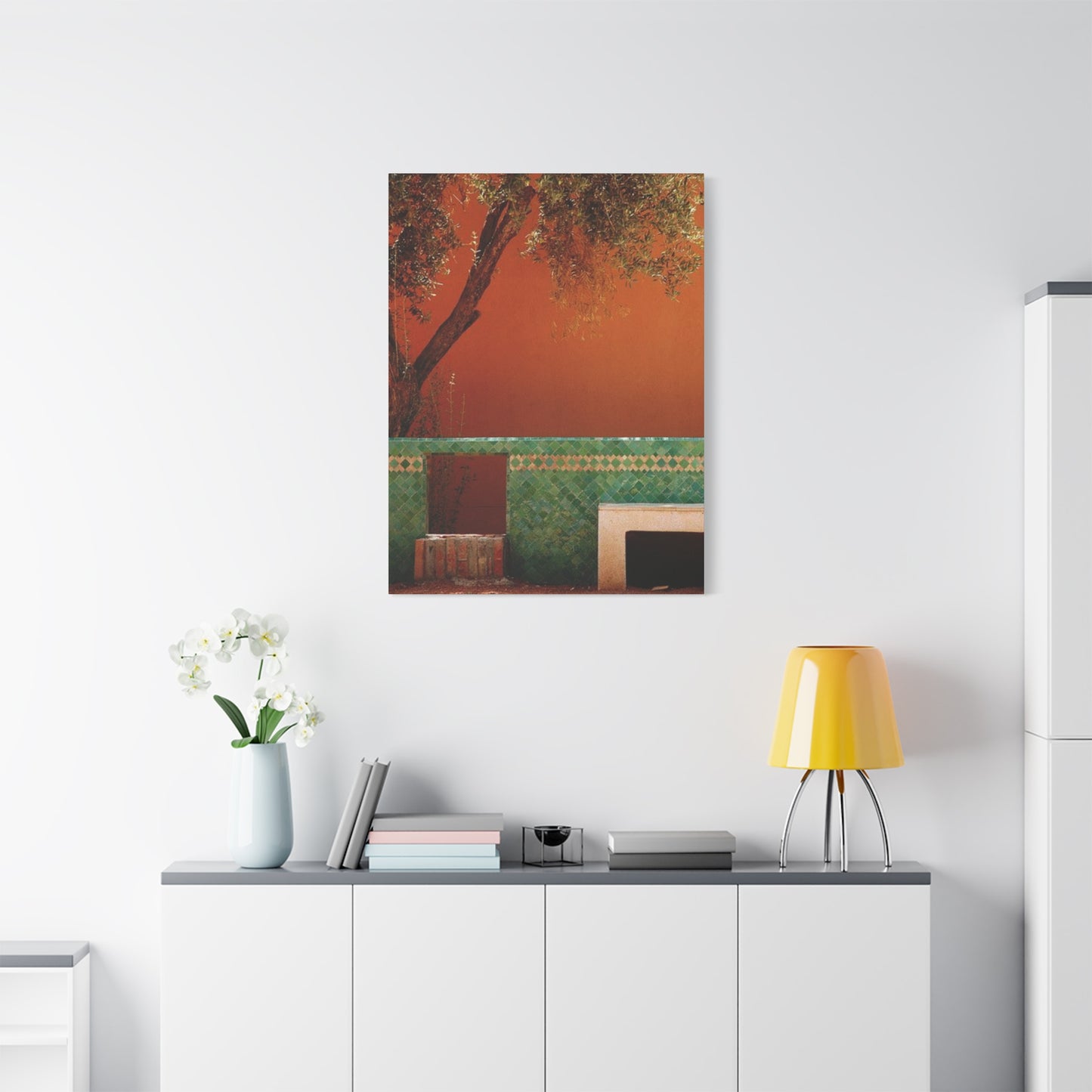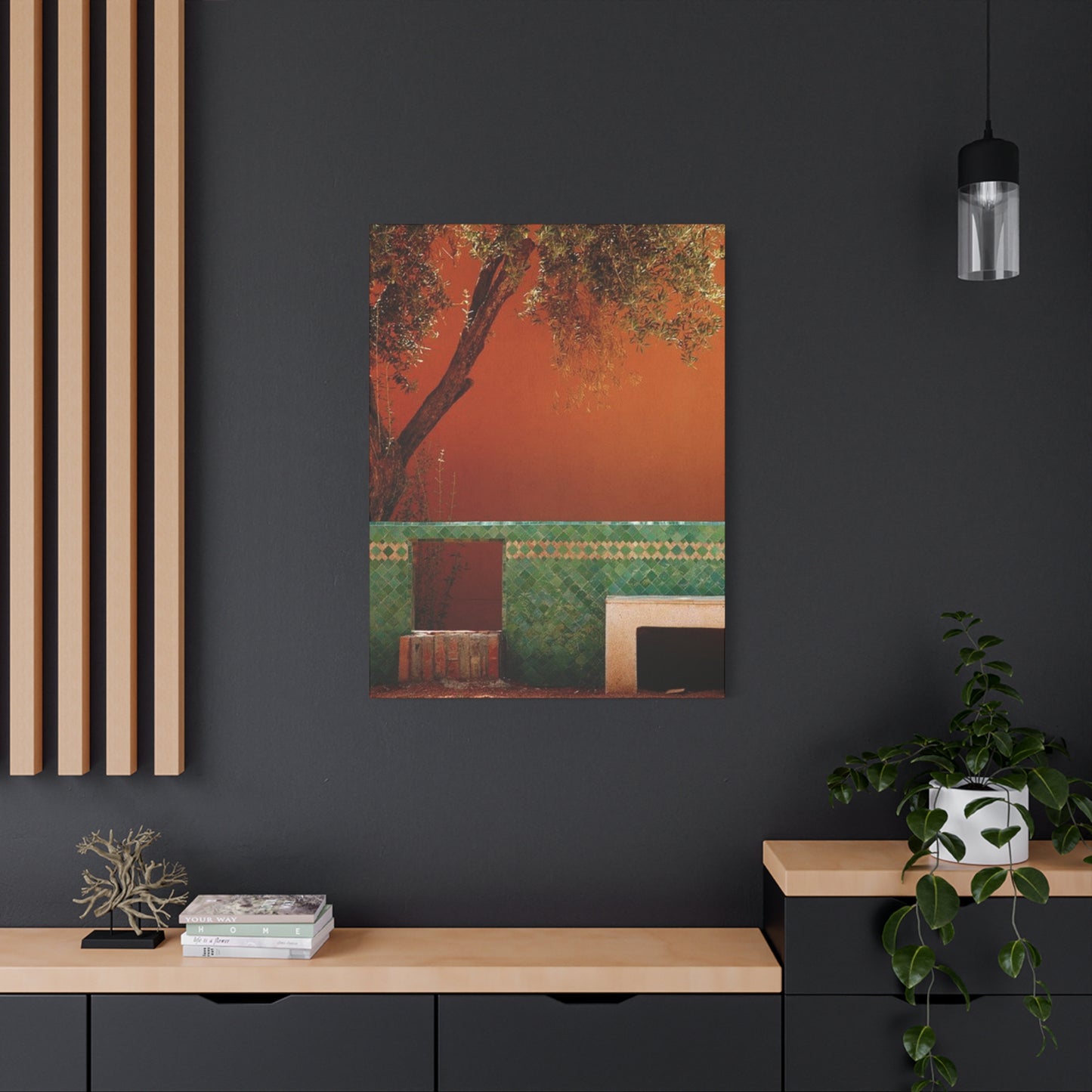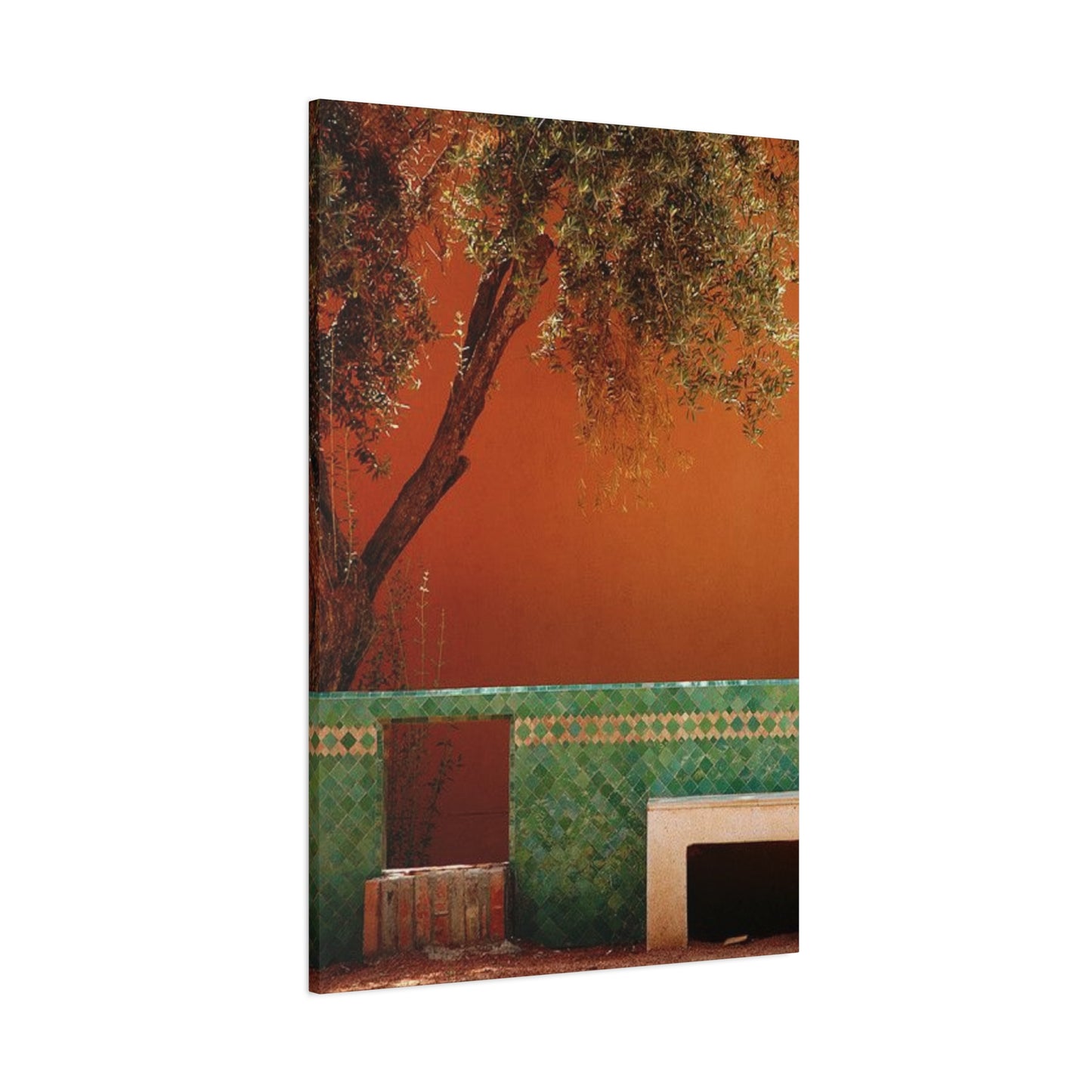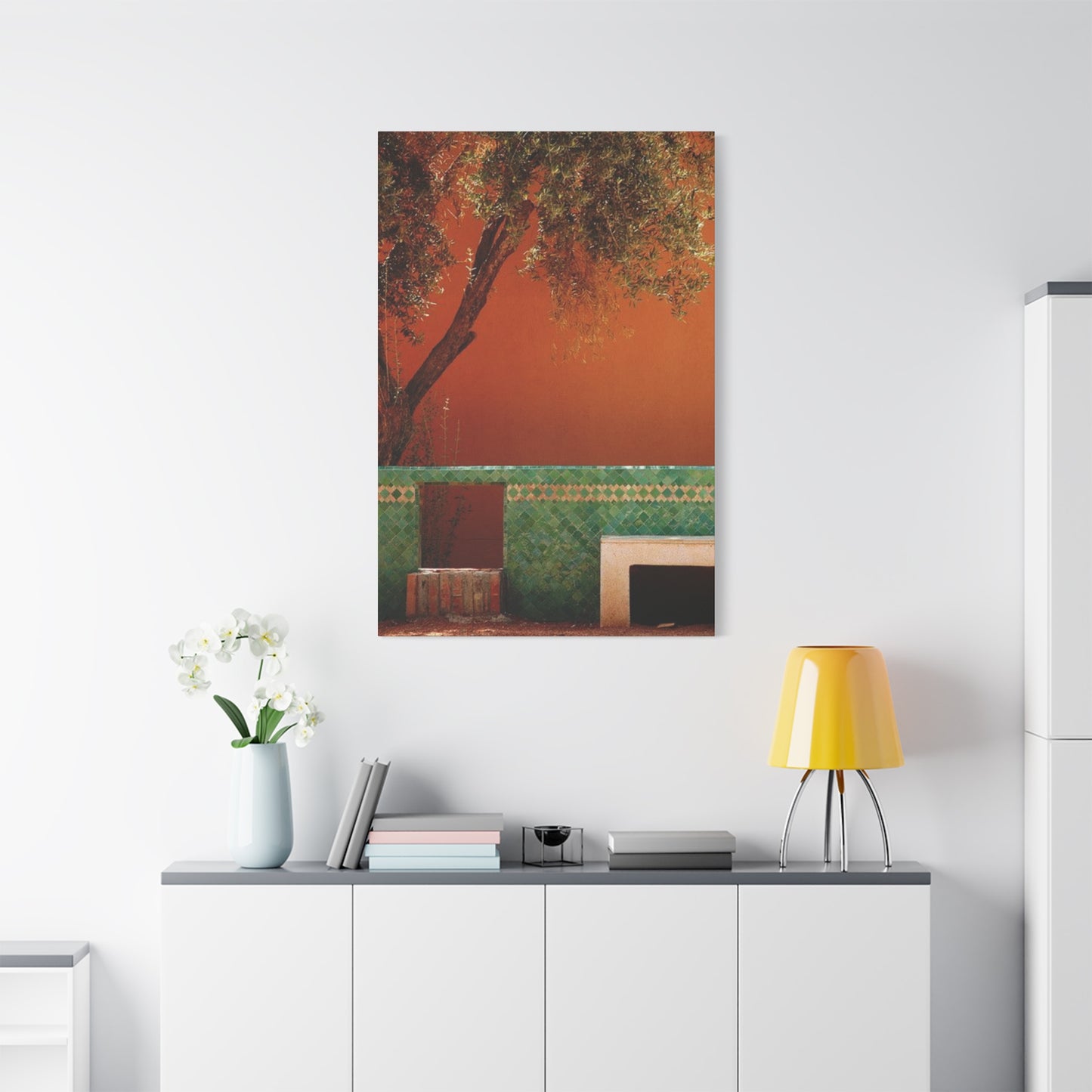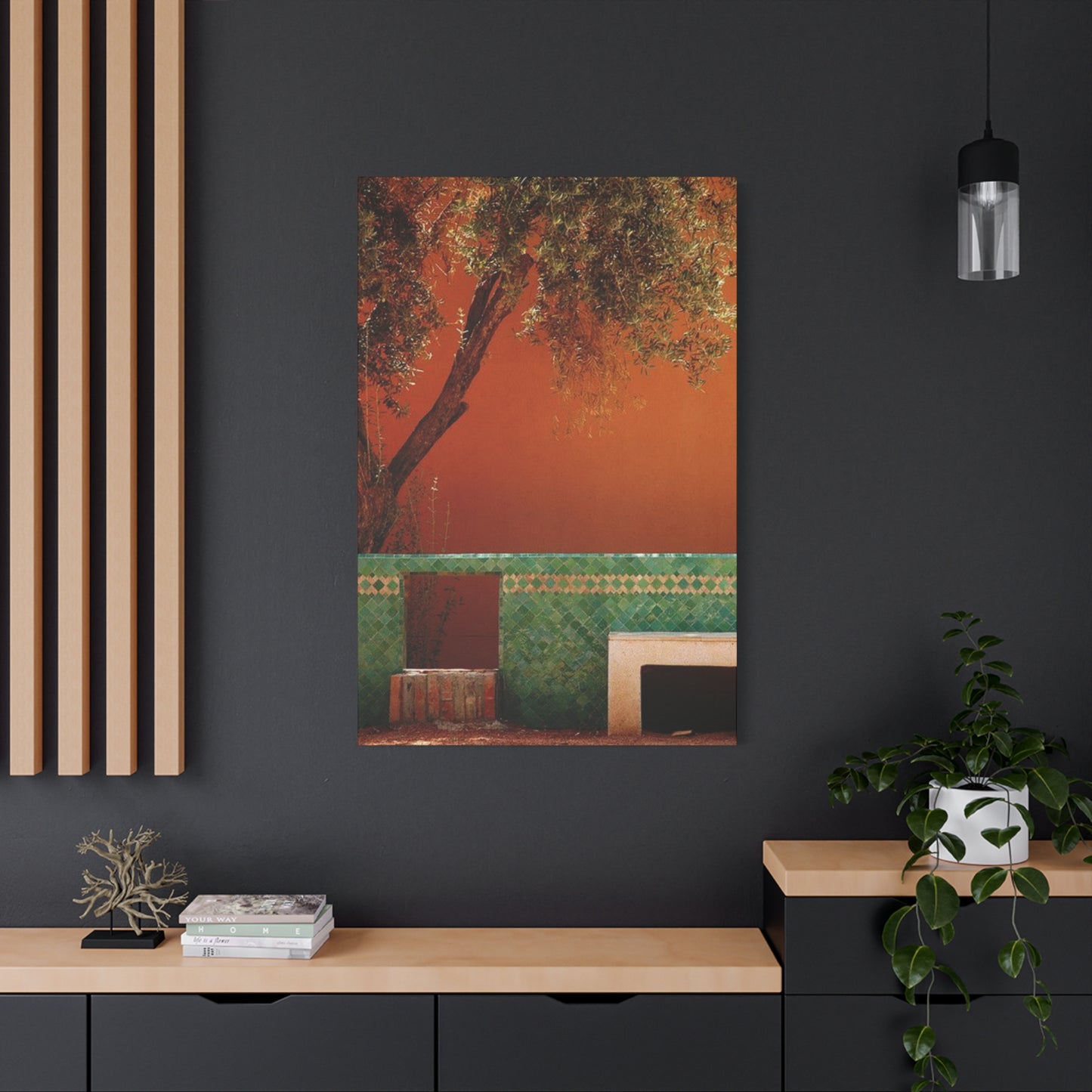Transform Your Space with Moroccan Wall Art Featuring Iconic Chair Architecture
Moroccan design has captivated admirers worldwide with its vibrant colors, intricate patterns, and rich cultural significance. When you bring Moroccan wall art canvas prints into your home, you're not just adding decoration—you're embracing centuries of artistic tradition that originated from the crossroads of African, European, and Middle Eastern influences. These stunning visual pieces serve as gateways to a world where every geometric pattern tells a story, every color choice reflects deep symbolism, and every composition echoes the architectural marvels found in ancient medinas and palaces across North Africa.
The allure of Moroccan aesthetics lies in its ability to create warmth and sophistication simultaneously. Canvas prints featuring these designs bring the essence of Marrakech, Fez, and Casablanca directly into your living environment without requiring extensive renovations or complete redesign projects. Whether you're drawn to the mesmerizing zellige tile patterns, the graceful arches reminiscent of historical mosques, or the bold color combinations that define this distinctive style, canvas reproductions offer an accessible way to incorporate these elements into contemporary homes.
This comprehensive exploration will take you through everything you need to know about selecting, displaying, and maintaining Moroccan wall art canvas prints. From understanding the cultural significance behind various motifs to practical advice on choosing the perfect size and placement for your rooms, this guide covers all aspects of bringing Mediterranean elegance into your residential or commercial environment. You'll discover how these artistic pieces can complement various design schemes, learn about the symbolism embedded in traditional patterns, and gain insights into creating cohesive visual narratives throughout your property.
The Historical Foundations of Moroccan Artistic Traditions
The artistic heritage of Morocco stretches back over a thousand years, shaped by successive waves of cultural influence from Berber tribes, Arab conquests, Andalusian refugees, French colonial presence, and Sub-Saharan African trade routes. This diverse historical tapestry created a unique visual language that distinguishes Moroccan art from other regional styles. The foundations were laid during the Islamic Golden Age when mathematical precision met spiritual devotion, resulting in geometric patterns that could theoretically extend infinitely—a representation of divine unity and eternal nature.
Moroccan artisans developed their craft within strict religious guidelines that prohibited figurative representations in sacred contexts. This limitation paradoxically sparked incredible creativity, pushing artists to explore abstract forms, geometric complexity, and botanical motifs with unprecedented sophistication. The result was an artistic vocabulary that communicated profound concepts through shape, color, and arrangement rather than literal depiction. These principles remain evident in contemporary canvas prints that draw from traditional designs.
Throughout the medieval period, major Moroccan cities became centers of artistic innovation. Fez developed particularly refined techniques in ceramics and architectural decoration, while Marrakech became known for bold color applications and grand architectural statements. The Saadian and Alaouite dynasties commissioned elaborate palaces and mosques that showcased the highest achievements of Moroccan craftsmanship. These historical monuments now serve as inspiration for modern canvas reproductions, allowing people worldwide to experience fragments of this magnificent heritage.
The influence of Andalusian refugees fleeing the Spanish Reconquista proved particularly significant. These skilled craftspeople brought sophisticated techniques from the Iberian Peninsula, blending them with existing North African traditions to create distinctly Moroccan styles. This fusion is visible in the intricate plasterwork patterns, the sophisticated tile arrangements, and the architectural details that frequently appear in contemporary canvas prints. The cross-pollination of ideas between Europe and Africa during this period created an aesthetic that feels simultaneously exotic and accessible to Western audiences.
Colonial encounters during the 19th and 20th centuries introduced new materials and production methods while paradoxically strengthening Moroccan commitment to preserving traditional arts. European interest in "Oriental" aesthetics created export markets for Moroccan crafts, which simultaneously threatened authentic practices while ensuring their economic viability. Today's canvas prints represent a continuation of this complex relationship between tradition and adaptation, maintaining aesthetic principles while embracing modern reproduction technologies.
Understanding Traditional Moroccan Patterns and Their Meanings
Geometric patterns form the backbone of Moroccan visual culture, representing mathematical perfection and spiritual harmony. The most recognizable is the eight-pointed star, created by overlapping two squares at 45-degree angles. This formation appears throughout Islamic art and carries multiple layers of meaning—the eight directions of the compass, the eight angels carrying Allah's throne, and the transition between the earthly square and the heavenly circle. Canvas prints featuring this motif bring not just visual interest but symbolic depth to your walls.
Interlacing patterns create the illusion of woven bands passing over and under each other in endless repetition. These designs symbolize the interconnectedness of all things and the continuous nature of existence. When executed skillfully, these patterns create optical effects that draw the eye deeper into the composition, creating meditative focal points that reward sustained viewing. Modern reproductions on canvas maintain these hypnotic qualities while offering easier maintenance than traditional carved plaster or mosaic installations.
The arabesque represents another fundamental element of Moroccan decoration. These flowing, vine-like patterns featuring stylized leaves, flowers, and tendrils create organic counterpoints to geometric rigidity. In Islamic philosophy, the arabesque represents nature's growth patterns and the Garden of Paradise. Canvas prints incorporating arabesque elements soften the mathematical precision of geometric designs, creating visual balance that prevents compositions from feeling cold or overly rigid.
Calligraphic elements frequently enhance Moroccan designs, with flowing Arabic script providing both visual texture and literal meaning. Even for non-Arabic speakers, these letter forms contribute elegant linear qualities that enhance overall compositions. Traditional sayings, Quranic verses, or poetry might be incorporated, adding layers of cultural significance. Contemporary canvas reproductions sometimes feature these elements, connecting modern homes to literary and spiritual traditions spanning centuries.
Color symbolism plays crucial roles in traditional Moroccan palettes. Blue evokes protection against evil spirits and represents the sky and spiritual transcendence. Green connects to Islam, paradise, and life itself. Red signifies strength, courage, and the earth. Yellow and gold represent wealth, power, and the sun's life-giving energy. White symbolizes purity and mourning, while black provides grounding contrast. Canvas prints faithful to traditional color schemes carry these symbolic associations, subtly influencing the emotional atmosphere of rooms where they're displayed.
The concept of horror vacui—the fear of empty space—influences traditional Moroccan design. Surfaces are typically filled with intricate patterns, creating visual richness that reflects the abundance of divine creation. This differs markedly from minimalist Western aesthetics that celebrate negative space. Canvas prints following this approach create focal points of intense visual activity, perfect for anchoring larger furnishing arrangements or creating dramatic accent walls that command attention.
The Production Process Behind Quality Canvas Prints
Modern canvas printing technology has revolutionized how decorative art reaches consumers, making museum-quality reproductions accessible at reasonable prices. The process begins with high-resolution digital photography or scanning of original artworks, historical tiles, architectural details, or artist creations inspired by Moroccan traditions. These digital files require exceptional detail capture—typically 300 dots per inch minimum—to ensure final prints maintain crispness even when enlarged to substantial dimensions.
Giclée printing represents the gold standard for canvas reproduction. This technique uses archival-quality inks and precision inkjet technology to create prints with color accuracy, tonal gradation, and longevity far superior to mass-market poster printing. The term "giclée" comes from French, meaning "to spray," describing how microscopic droplets of pigment are applied to the canvas surface. Professional-grade printers employ twelve or more separate ink cartridges, allowing subtle color mixing that captures the nuanced palettes found in authentic Moroccan designs.
Canvas material selection significantly impacts final results. Cotton canvas offers affordability and adequate quality for most applications, with tightly woven surfaces accepting ink well while providing durability. Polyester blends increase strength and resistance to stretching over time, important for larger pieces that experience more tension. Linen canvas, though more expensive, provides superior archival qualities and texture that closely mimics traditional painting surfaces. For Moroccan designs with intricate details, smoother canvas weaves ensure pattern clarity without texture interference.
The stretching and mounting process determines structural integrity and presentation quality. Gallery wrap mounting pulls canvas around wooden frame edges, allowing image continuation on sides—ideal for frameless hanging that showcases modern sensibilities. Traditional mounting stops imagery at the frame edge, better suited for conventional framing. The wooden stretcher bars themselves should be kiln-dried and properly joined to prevent warping. Higher-quality productions use thicker bars, typically 1.5 to 2 inches, providing substantial presence when hung.
Protective coatings applied after printing enhance longevity while affecting appearance. UV-resistant sprays prevent fading from sunlight exposure, particularly important for vibrant Moroccan color schemes. Matte finishes reduce glare and maintain the appearance of traditional painted surfaces. Satin finishes provide subtle sheen that enhances color depth without creating distracting reflections. Glossy coatings intensify colors dramatically but may prove unsuitable for well-lit environments where reflections interfere with viewing.
Quality control measures separate professional productions from budget alternatives. Color calibration ensures printed hues match original designs accurately. Physical inspection catches canvas imperfections, printing artifacts, or stretching issues before products reach customers. Reputable manufacturers provide color-accurate online previews, detailed specifications, and satisfaction guarantees. When investing in Moroccan canvas prints, researching manufacturer reputations and production methods ensures you receive pieces that truly capture the beauty and detail of authentic designs.
Selecting the Perfect Moroccan Canvas Print for Your Environment
Choosing appropriate Moroccan canvas prints requires consideration of multiple factors that influence both aesthetic impact and practical satisfaction. The decision-making process begins with evaluating your existing surroundings—not to match exactly, but to identify opportunities for complementary contrast or harmonic reinforcement. Moroccan designs possess inherent versatility, adapting to various settings from traditional to contemporary, but thoughtful selection maximizes their effectiveness.
Color palette serves as the primary selection criterion. If your room features neutral tones—whites, grays, beiges, taupes—bold Moroccan prints with vibrant blues, reds, oranges, and greens create striking focal points that energize the environment. Alternatively, if your furnishings already incorporate strong colors, selecting prints with more subdued palettes or designs emphasizing pattern over color prevents visual competition. Consider whether you want the canvas to dominate attention or blend harmoniously into the existing scheme.
Pattern density affects psychological impact significantly. Intricate, densely patterned Moroccan designs create active, energizing visual fields suitable for gathering areas, entryways, or dining rooms where stimulation proves desirable. Simpler compositions with more breathing room between elements suit bedrooms, meditation areas, or offices where calmness enhances functionality. Pay attention to how your eye feels when viewing potential selections—comfortable and engaged, or overwhelmed and exhausted?
Subject matter variety within Moroccan canvas prints offers different thematic directions. Architectural scenes featuring iconic doorways, courtyards, or mosque details bring structural elegance and cultural specificity. Pure pattern reproductions emphasize traditional tile work or textile designs, offering timeless geometry. Market scenes or cultural depictions introduce human elements and narrative interest. Botanical interpretations showcase the gardens and natural elements central to Moroccan aesthetics. Each category serves different purposes depending on the story you want your environment to tell.
Scale considerations prove critical for successful placement. Undersized prints disappear against large walls, failing to anchor furnishings or create adequate visual weight. Oversized pieces overwhelm small rooms, making them feel cluttered and claustrophobic. General guidelines suggest artwork should occupy roughly two-thirds to three-quarters of available wall width above furniture pieces. For standalone wall placement, ensure the canvas relates proportionally to the wall section rather than floating insignificantly or dominating oppressively.
Multiple-panel arrangements offer dynamic alternatives to single-piece installations. Diptychs, triptychs, or larger multi-panel compositions allow pattern continuation across separate canvases, creating movement and rhythm along walls. These arrangements prove particularly effective for Moroccan designs, where pattern repetition reflects traditional tile installations. Ensure panels are properly aligned during hanging, with consistent spacing that maintains visual unity while acknowledging separate elements.
Personal resonance should ultimately guide selection. Beyond design principles and coordination concerns, choose pieces that genuinely speak to you emotionally and aesthetically. Moroccan art carries soul and history—your connection to specific pieces enhances the authenticity they bring to your environment. Visit galleries, browse extensive collections online, and take time finding designs that create genuine excitement rather than settling for adequate matches. The investment in quality canvas prints deserves this thoughtful approach.
Complementary Design Elements That Enhance Moroccan Aesthetics
Successfully incorporating Moroccan canvas prints into your home extends beyond the artwork itself, encompassing surrounding elements that either support or undermine the overall aesthetic. Lighting deserves primary consideration, as it dramatically affects how prints appear throughout the day. Natural light brings out the vibrancy in traditional Moroccan color schemes, but direct sunlight risks fading over time. Position prints to receive reflected rather than direct light, or use UV-protective glass if framing. Adjustable artificial lighting allows you to highlight canvas prints effectively during evening hours, creating focal points that draw attention exactly as intended.
Metalwork accessories naturally complement Moroccan canvas prints, echoing the brass lanterns, iron window grilles, and copper vessels found throughout North African homes. Wall sconces positioned adjacent to canvas prints create layered visual interest while providing functional illumination. Decorative mirrors with metal frames enhance the reflective qualities found in traditional Moroccan palatial halls. Even small touches like metal drawer pulls or cabinet hardware subtly reinforce the cultural aesthetic without overwhelming your environment.
Textile integration bridges the gap between two-dimensional wall art and three-dimensional living environments. Throw pillows featuring Moroccan patterns create thematic continuity with canvas prints while providing comfortable functionality. Area rugs with geometric designs echo the patterns on your walls, establishing vertical-horizontal dialogue that unifies rooms. Curtains in complementary colors frame windows while tying into your canvas color schemes. These textile elements add necessary warmth and texture that balance the flat, hard surface of canvas prints.
Ceramic and pottery pieces bring authentic material presence into rooms decorated with Moroccan canvas prints. Decorative plates, vases, or bowls featuring traditional glazes and patterns create dimensional counterpoints to flat artwork. These objects carry actual weight and substance, grounding the visual elements on your walls with tangible, functional beauty. Display them on shelves, sideboards, or coffee tables within sight lines of your canvas prints to establish thematic consistency throughout the room.
Furniture selection significantly impacts how Moroccan canvas prints integrate into your overall scheme. While authentic Moroccan furniture proves expensive and sometimes impractical for Western lifestyles, certain pieces bridge cultural aesthetics effectively. Low seating options, carved wooden tables, or ornately decorated cabinets support the cultural narrative. Even contemporary furniture in appropriate materials—dark woods, wrought iron bases, leather upholstery—can complement rather than clash with Moroccan artwork through careful material and color coordination.
Plants introduce organic elements that balance the geometric precision typical of Moroccan patterns. Traditional Moroccan architecture features lush courtyard gardens where greenery softens hard architectural surfaces. Similarly, indoor plants positioned near your canvas prints create visual relief from geometric complexity while enhancing the overall atmosphere. Large-leafed tropical plants evoke the exoticism associated with North African culture, while succulents reference the arid landscapes of Morocco's Atlas Mountain regions and Saharan borders.
Negative space management ensures Moroccan canvas prints remain focal points rather than becoming lost in clutter. The philosophy of horror vacui that characterizes traditional Moroccan art shouldn't extend to your entire environment. Allow breathing room around canvas prints so they can command attention appropriately. Avoid overcrowding walls with excessive additional artwork, photographs, or decorative objects that compete for visual dominance. The canvas print itself already contains abundant detail—surround it with simplicity that lets it shine.
Room-Specific Strategies for Moroccan Canvas Display
Living rooms present prime opportunities for substantial Moroccan canvas installations that establish entire room aesthetics. As gathering places for family and guests, these areas benefit from conversation-starting artwork that reflects personal style while creating welcoming atmospheres. Large-scale single canvases above sofas create dramatic focal points, particularly when featuring elaborate geometric patterns or architectural scenes. Alternatively, gallery walls combining multiple smaller Moroccan prints with varied designs create dynamic, collected-over-time appearances that feel personal and curated rather than decorator-installed.
In living rooms, position Moroccan canvas prints at eye level when seated, ensuring comfortable viewing from primary furniture locations. The artwork should relate to seating arrangements rather than floating arbitrarily on walls. Consider sight lines from multiple vantage points—what guests see upon entering, what family members view from favorite chairs, and how the canvas appears from dining areas or kitchens in open-plan homes. Successful placement accounts for these multiple perspectives, ensuring the artwork enhances the room from every angle.
Bedrooms require different considerations, emphasizing calmness and personal connection over dramatic impact. Moroccan canvas prints in these private retreats should reflect colors and patterns that promote relaxation rather than stimulation. Cooler blues and greens prove more suitable than intense reds and oranges. Simpler geometric patterns or softer arabesque designs work better than densely detailed compositions that might feel visually busy before sleep. Position prints where you can easily appreciate them—typically above headboards or on walls opposite the bed—creating pleasant focal points during quiet moments.
Dining rooms benefit from Moroccan canvas prints that stimulate appetite and conversation without overwhelming the dining experience. Traditional Moroccan dining involves communal eating and lively discussion, cultural contexts that inform appropriate artwork selection. Warmer colors—reds, oranges, golden yellows—prove more suitable here, as these hues psychologically enhance appetite and social engagement. Architectural scenes featuring Moroccan courtyards, market imagery, or pattern compositions based on traditional dining textiles create thematically appropriate choices that enhance the purpose of the room.
Entryways and hallways present unique opportunities and challenges for Moroccan canvas displays. These transitional areas receive brief but frequent viewing, making strong first impressions crucial. Bold, immediately recognizable Moroccan motifs work effectively here—iconic doorways, dramatic geometric patterns, or vibrant color combinations that don't require extended study to appreciate. Narrow hallways benefit from vertical canvas orientations or series of smaller prints arranged linearly, creating visual interest that draws people through the passage rather than making them feel confined.
Home offices and study areas accommodate Moroccan canvas prints that inspire creativity while maintaining focus. The mathematical precision inherent in geometric Islamic patterns actually supports concentration, as the ordered, repeating structures create subconscious harmony. Avoid extremely vibrant colors that prove distracting during work requiring sustained attention. Instead, select prints with sophisticated color palettes and balanced compositions that provide visual interest during breaks without pulling focus from tasks. Position prints to be visible when lifting your eyes from computer screens, creating natural rest points that reduce eye strain.
Bathrooms, though often overlooked for serious artwork, can absolutely showcase Moroccan canvas prints effectively. The connection between Moroccan culture and hammam traditions—public baths featuring elaborate tile work—makes this placement historically appropriate. Moisture-resistant canvas treatments or strategic positioning away from direct shower spray prevents damage concerns. Smaller prints work best in typically compact bathroom dimensions, perhaps featuring tile-inspired patterns that thematically complement the room's function while elevating it beyond purely utilitarian status.
Color Psychology in Moroccan Canvas Selection
The psychological impact of color significantly affects how Moroccan canvas prints influence room atmospheres and occupant moods. Understanding these effects empowers more intentional selection that serves both aesthetic and functional goals. Traditional Moroccan palettes weren't chosen randomly—they reflect centuries of empirical understanding about how colors affect human psychology, combined with cultural symbolism and available pigment sources.
Blue dominates many Moroccan designs, particularly those from coastal regions and cities like Chefchaouen, famous for its blue-painted buildings. Psychologically, blue promotes calmness, reduces stress, and enhances focus—making canvas prints heavy in blue suitable for bedrooms, bathrooms, and meditation areas. The color lowers heart rate and blood pressure measurably, creating physiological relaxation beyond mere aesthetic preference. Lighter blues feel more serene and spacious, while deeper blues add sophistication and depth without losing their calming properties.
Red commands attention and stimulates energy in ways that make it powerful but requiring careful application. In Moroccan contexts, red symbolizes strength, passion, and vitality—qualities desirable in gathering areas but potentially overwhelming in restful environments. Canvas prints featuring prominent reds work well in dining rooms where they stimulate appetite and conversation, or in exercise areas where energy boosting proves beneficial. Balance red with cooler tones or neutrals to prevent overstimulation, using it as an accent within broader compositions rather than the dominant color.
Yellow and gold evoke sunshine, optimism, and prosperity in psychological studies and Moroccan cultural symbolism alike. These warm tones create welcoming, cheerful atmospheres particularly effective in kitchens, breakfast nooks, or entryways where you want uplifting energy. However, excessive yellow can cause anxiety or irritability in some individuals, so moderate its presence or opt for richer gold tones that feel more grounded. Canvas prints using yellow as accent rather than primary color often prove most successful, providing brightness without overwhelming sensory systems.
Green bridges the psychological effects of blue's calmness and yellow's optimism, resulting in balanced, harmonious responses. In Islamic and Moroccan traditions, green holds special significance as the color of paradise, life, and the Prophet. Psychologically, green reduces stress, improves concentration, and creates feelings of renewal—making it universally suitable across various room types. Canvas prints with substantial green content work particularly well in home offices, reading nooks, or any environment where balanced energy and sustained focus prove valuable.
Orange combines red's energy with yellow's cheerfulness in proportions that feel stimulating but less aggressive than pure red. Moroccan spice market scenes, sunset-lit architectural photography, and certain traditional patterns feature prominent oranges that bring warmth and vitality to environments. This color stimulates enthusiasm and social interaction while promoting feelings of abundance—excellent for family rooms, creative studios, or entertainment areas. Like red, orange benefits from balanced application, working well as a strong accent within more varied compositions.
Neutral tones—creams, tans, warm grays—provide essential balance in Moroccan canvas compositions, preventing color schemes from becoming overwhelming. These tones create visual rest areas within complex patterns, allow other colors to appear more vibrant through contrast, and ensure designs feel grounded rather than floating. Psychologically, neutrals promote stability, versatility, and timelessness. Canvas prints with sophisticated neutral palettes suit minimalist-leaning environments while still delivering Moroccan character through pattern and composition rather than color intensity alone.
Black, white, and metal tones create dramatic contrast in Moroccan designs, defining boundaries and increasing pattern visibility. Black adds weight and sophistication while creating necessary shadows in complex geometric compositions. White represents purity and provides essential breathing room in busy patterns. Silver and gold metallics, when captured effectively in canvas printing, add luxury and light-reflective qualities reminiscent of traditional metalwork. These accent tones rarely dominate entire compositions but prove crucial for overall impact and readability.
Creating Gallery Walls With Moroccan Canvas Prints
Gallery walls transform blank expanses into curated collections that showcase multiple Moroccan canvas prints simultaneously, creating visual interest through thoughtful arrangement and thematic coherence. This approach works particularly well for Moroccan aesthetics, where pattern repetition and variation mirror traditional tile installations that cover entire palace walls. However, successful gallery walls require planning and execution beyond simply hanging multiple pieces randomly.
Begin gallery wall planning by selecting a cohesive theme or connection between pieces. This might involve color palette consistency, pattern style similarity, or subject matter relationships. Perhaps all pieces feature blue-dominant color schemes, or all showcase different geometric patterns in complementary colors, or all depict architectural elements from various Moroccan cities. This unifying thread prevents the collection from appearing chaotic or randomly assembled. Even within cohesion, include enough variety to maintain visual interest—exact repetition becomes monotonous rather than harmonious.
Arrangement strategy determines whether your gallery wall feels intentional or haphazard. Symmetrical arrangements create formal, organized impressions suitable for traditional environments. These might involve identical-sized canvases arranged in perfect grids, or carefully balanced asymmetry where visual weight distributes evenly across the composition. Asymmetrical arrangements feel more casual and collected, but still require underlying structure—imagine alignment guides even if not perfectly obvious. Most successful gallery walls follow either consistent top/bottom alignment or centerline alignment that creates invisible order.
Scale variation adds dynamism to gallery wall compositions while requiring careful balancing. Combine larger anchor pieces with smaller complementary prints, ensuring the arrangement doesn't feel lopsided or awkwardly weighted. Typically, place larger pieces toward the bottom or center of arrangements, with smaller pieces surrounding them. This mimics natural visual scanning patterns and creates stable foundations. Avoid extreme size disparities that make some pieces appear insignificant or others overwhelmingly dominant.
Spacing consistency maintains professional appearance in gallery wall installations. Whether you prefer tight spacing that creates unified tapestries or generous separation that emphasizes individual pieces, maintain that spacing throughout the arrangement. Two to three inches between frames works well for most installations, creating distinct-but-connected appearances. Use paper templates in actual canvas sizes to arrange and rearrange on the wall before committing to nail holes—this trial-and-error phase prevents permanent mistakes and allows experimentation with different configurations.
Frame selection significantly impacts gallery wall cohesion. For Moroccan canvas prints, options range from uniform framing that creates consistency across varied imagery, to complementary frames that coordinate without matching exactly, to no frames at all for modern gallery-wrap presentations. Uniform frames prove easiest to execute successfully but require commitment to that specific frame style indefinitely. Varied frames feel more collected but demand skilled coordination of colors, materials, and styles that complement rather than clash. Consider how frames interact with both the canvas prints themselves and surrounding architectural elements.
Lighting transforms gallery walls from daytime features to evening focal points. Picture lights mounted above individual canvases create museum-quality presentations while solving ambient lighting limitations. Track lighting allows adjustable spotlighting that highlights your favorite pieces while maintaining overall illumination. Avoid direct glare that creates reflective hotspots, particularly on glossy canvas coatings. Test lighting from multiple viewing angles before finalizing positions, ensuring comfortable viewing from primary sight lines throughout the room.
Maintenance considerations prove especially important for gallery walls containing multiple pieces. Establish regular dusting schedules to prevent accumulation that dulls colors and details. Periodically check hanging hardware security, particularly for heavier canvases where gravity constantly stresses mounting systems. Consider rotation possibilities if you have more Moroccan prints than wall positions—changing pieces periodically maintains freshness and allows appreciation of your entire collection. Document your arrangement with photographs before making changes, preserving layouts you might want to recreate.
Maintaining and Protecting Your Moroccan Canvas Prints
Proper maintenance ensures your Moroccan canvas prints retain their beauty and structural integrity for decades, protecting your investment while preserving the artistic and cultural value these pieces bring to your environment. Canvas prints, while more durable than paper-based artwork, still require attentive care that addresses their specific material properties and environmental vulnerabilities. Establishing maintenance routines prevents damage that proves difficult or impossible to reverse.
Dust accumulation represents the most common threat to canvas print appearance. Airborne particles settle on horizontal and vertical surfaces alike, gradually dulling colors and obscuring fine details. Address this with regular gentle dusting using microfiber cloths or soft-bristled brushes specifically designed for artwork. Never use abrasive materials or harsh brushing that might snag canvas weave or damage protective coatings. Dust in consistent directions rather than circular motions, working from top to bottom to avoid redistributing particles. Establish monthly dusting schedules as minimum maintenance, increasing frequency in dustier environments.
Humidity fluctuations pose structural threats to canvas and wooden stretcher frames. Excessive moisture causes canvas to slacken and stretcher bars to swell or warp, potentially creating distortions that affect image appearance. Extreme dryness leads to brittleness and tightening that can crack paint layers or printing inks. Maintain relative humidity between 40-60% for optimal preservation, using humidifiers or dehumidifiers as necessary to control environmental conditions. Avoid hanging canvas prints in bathrooms where they'll experience frequent humidity spikes, or use specialized moisture-resistant treatments if bathroom display proves necessary.
Temperature stability protects canvas materials from expansion-contraction cycles that stress mounting systems and material structures. Avoid hanging prints near heating vents, fireplaces, radiators, or air conditioning outlets where temperature fluctuations prove most extreme. Similarly, don't position canvases against exterior walls in climates with significant seasonal temperature variations, as these walls transfer outdoor temperatures indoors. Interior walls in climate-controlled rooms provide optimal conditions that minimize stress from environmental changes.
Sunlight exposure causes fading that gradually degrades color vibrancy and visual impact. UV radiation breaks down ink pigments and canvas fibers through photochemical reactions that prove irreversible once damage occurs. Position Moroccan canvas prints away from direct sunlight, particularly south-facing windows in northern hemisphere locations that receive maximum sun exposure. Use UV-filtering window films, curtains, or blinds during peak sunlight hours if relocation proves impractical. Quality canvas prints should include UV-resistant coatings, but these slow rather than completely prevent fading—avoidance remains the best protection strategy.
Physical damage from impacts, punctures, or handling accidents requires immediate attention to prevent worsening. Small tears or punctures might be repairable by professional art conservators who can patch canvas from behind and touch up affected areas. However, prevention proves far more effective than remediation. When cleaning around canvas prints, maintain awareness of vacuum cleaner wands, feather dusters, or other tools that might accidentally strike or puncture surfaces. If relocating prints, handle by frames or stretcher bars rather than touching canvas directly, as oils from skin can transfer and potentially affect appearance over time.
Canvas tightness maintenance ensures prints retain proper flatness and tension. Over time, especially in humid environments, canvas may slacken slightly, creating waves or sags that distort imagery. Most stretched canvases include adjustment keys—small wooden wedges inserted into stretcher bar corners. Gently tap these wedges deeper into their slots to increase tension gradually, working incrementally rather than forcing excessive tightness that might tear canvas or break stretcher joints. If you're uncomfortable performing this adjustment, consult professional framers who can restore proper tension safely.
Professional cleaning becomes necessary when dust accumulation exceeds what dry dusting can address, or when stains, marks, or discoloration occur. Never attempt wet cleaning on canvas prints yourself, as moisture can cause irreversible damage to inks, canvas sizing, and adhesives. Professional art conservators possess appropriate cleaning solutions, techniques, and experience to address various contamination types without risking further damage. The cost of professional cleaning proves minimal compared to replacing damaged prints or living with diminished appearance.
Moroccan Canvas Prints in Commercial and Hospitality Settings
Businesses increasingly recognize how Moroccan canvas prints enhance commercial environments, creating memorable brand identities while providing visual interest that improves customer experiences. Hotels, restaurants, spas, retail stores, and office complexes benefit from the sophistication and cultural richness these pieces bring, differentiating their atmospheres from generic corporate blandness. Commercial implementation requires considerations beyond residential applications, addressing durability, scale, and thematic appropriateness for business contexts.
Hospitality venues find Moroccan aesthetics particularly appropriate, as the welcoming warmth and exotic sophistication align perfectly with guest-oriented service philosophies. Boutique hotels might incorporate Moroccan canvas prints throughout public areas and guest rooms, creating cohesive design narratives that transform stays into cultural experiences. Lobby installations benefit from large-scale dramatic pieces that make immediate impressions, while corridor arrangements guide guests through properties with visual interest. Guest room selections might be more subdued, promoting relaxation while maintaining thematic consistency.
Restaurants leverage Moroccan canvas prints to establish ambiance that enhances dining experiences and reinforces culinary concepts. Mediterranean or Middle Eastern restaurants find obvious thematic connections, but Moroccan aesthetics translate effectively to various dining concepts through careful selection. The warm colors typical of Moroccan palettes stimulate appetite psychologically, while intricate patterns create visual richness that elevates perceived dining experience quality. Position prints to be visible from dining tables without overwhelming intimate conversations—artwork should enhance rather than dominate the meal.
Spa and wellness facilities discover natural synergy with Moroccan canvas prints, as hammam traditions connect directly to wellness and cleansing rituals. The calming blues and greens prevalent in many Moroccan designs support relaxation objectives central to spa environments. Geometric patterns provide meditative focal points that complement mindfulness practices. Treatment room selections should emphasize serenity, while reception areas might incorporate slightly more energetic compositions that welcome guests without overstimulating them before treatments designed to induce relaxation.
Retail environments employ Moroccan canvas prints as atmospheric elements that shape shopping experiences and brand perceptions. Boutiques selling clothing, jewelry, home goods, or artisan products benefit from the sophisticated, curated aesthetics Moroccan artwork projects. The visual richness suggests quality, uniqueness, and attention to detail—attributes that transfer subconsciously to displayed merchandise. Scale artwork appropriately to retail dimensions, ensuring visibility without overwhelming product displays that represent your actual inventory and income sources.
Corporate offices increasingly move beyond generic artwork toward more distinctive aesthetic choices that reflect company culture and values. Moroccan canvas prints suit businesses emphasizing creativity, global perspectives, or cultural sophistication. They work particularly well in client-facing areas—reception lobbies, conference rooms, executive offices—where they contribute to professional impressions while avoiding corporate sterility. Employee areas benefit from the psychological effects of color and pattern, potentially boosting mood and productivity through thoughtfully selected pieces.
Durability requirements in commercial settings exceed residential standards due to higher traffic, longer daily exposure, and greater liability concerns. Specify commercial-grade canvas prints with enhanced UV protection, more robust stretcher frames, and potentially protective glazing that prevents physical damage. Mounting systems must meet commercial building codes and insurance requirements, often necessitating professional installation that ensures security against accidental dislodgement. Budget for higher-quality productions that withstand commercial wear rather than residential alternatives that might deteriorate prematurely.
Purchasing Considerations for Moroccan Canvas Prints
Navigating the marketplace for Moroccan canvas prints requires understanding quality indicators, price-value relationships, and vendor reliability factors that separate satisfying purchases from disappointing ones. The proliferation of online artwork retailers offers unprecedented selection but also necessitates careful evaluation, as product quality varies dramatically between sellers. Informed purchasing decisions ensure you receive pieces that meet expectations while avoiding common pitfalls that plague unwary buyers.
Price ranges for Moroccan canvas prints span from under twenty dollars for mass-produced small pieces to thousands for large, artist-created limited editions. Understanding what factors justify higher prices helps determine appropriate budgets and expectations. Inexpensive prints typically use lower-resolution source images, less sophisticated printing technology, thinner canvas materials, and cheaper stretcher frames. They serve perfectly adequately for temporary or budget-conscious applications but shouldn't be expected to rival gallery-quality pieces. Mid-range options often provide excellent value, balancing quality and affordability. Premium productions justify costs through archival materials, superior color accuracy, hand-stretched mounting, and artist credentials.
Vendor reputation research prevents disappointment and potential financial loss. Established art print companies with extensive customer reviews, professional websites, and clear return policies offer greater security than unknown entities with minimal online presence. Check multiple review sources rather than relying solely on testimonials published on sellers' own websites. Social media platforms, art forums, and general consumer review sites provide uncensored customer experiences that reveal both strengths and weaknesses. Pay particular attention to comments regarding color accuracy, shipping quality, customer service responsiveness, and return/exchange processes.
Image resolution specifications directly impact final print quality, particularly for larger canvas sizes. Request information about source file resolution and ensure it meets minimum requirements for your desired dimensions. As general guidelines, 100 DPI produces acceptable quality, 150 DPI yields good results, and 300 DPI achieves professional standards. Multiply your desired canvas dimensions by the DPI to calculate required pixel dimensions—a 40×30 inch canvas at 300 DPI requires 12,000×9,000 pixel source files. Vendors unable or unwilling to provide resolution information should raise concerns about their quality standards.
Customization options allow personalization that creates truly unique pieces rather than mass-market duplicates. Many vendors offer custom sizing that accommodates specific wall dimensions or proportional preferences. Color adjustment services modify hues to coordinate with existing environments. Some allow combining elements from different designs or creating entirely bespoke compositions based on your vision.
Conclusion
Transform Your Space with Moroccan Wall Art Featuring Iconic Chair Architecture highlights the remarkable power of design to infuse interiors with culture, elegance, and visual intrigue. Moroccan-inspired décor has long captivated homeowners and designers alike for its intricate patterns, vibrant colors, and unique architectural details. By focusing on iconic chair architecture within Moroccan wall art, you can bring a distinctive blend of history, artistry, and sophistication into your living space, creating an environment that is both visually stunning and culturally resonant.
The allure of Moroccan wall art lies in its balance between tradition and contemporary style. Iconic chair designs—often characterized by intricate carvings, elegant curves, and ornamental motifs—serve as symbolic representations of Moroccan craftsmanship and heritage. When featured in wall art, these chairs do more than decorate walls—they tell stories. They evoke the spirit of Moroccan interiors, from bustling medinas to serene courtyards, allowing viewers to connect with the warmth, artistry, and timeless elegance of this North African culture.
Placement and scale are key factors in maximizing the impact of Moroccan chair wall art. Large-scale canvases can anchor a living room, hallway, or dining area, becoming focal points that draw the eye and spark conversation. Smaller prints, either individually framed or grouped in curated arrangements, work beautifully in bedrooms, home offices, or reading nooks, adding subtle layers of interest without overwhelming the décor. These pieces are highly versatile, effortlessly complementing modern, bohemian, or traditional interior styles, and adding a touch of global sophistication to any space.
Color, texture, and pattern are also central to Moroccan-inspired décor. The warm earthy tones of traditional Moroccan furniture—deep ochres, rich ambers, and muted greens—combined with intricate line work and geometric motifs, create a visually rich yet harmonious aesthetic. Pairing chair-focused wall art with complementary textiles, rugs, or decorative objects can enhance these effects, creating cohesive interiors that feel curated, inviting, and authentic. Accent lighting, whether natural or artificial, further elevates the artwork, highlighting details, shadows, and textures that bring depth and dimension to your walls.
Beyond aesthetics, Moroccan wall art featuring iconic chairs fosters cultural appreciation and storytelling. Each piece invites reflection on the artistry, design principles, and historical context that inform Moroccan interiors. It’s a celebration of craftsmanship and design, offering homeowners a chance to bring global inspiration into their daily environment. Moreover, this style encourages mindfulness and emotional engagement, transforming walls into spaces that reflect creativity, elegance, and heritage.
Ultimately, Transform Your Space with Moroccan Wall Art Featuring Iconic Chair Architecture demonstrates how thoughtfully chosen art can elevate both the visual and emotional experience of a home. By incorporating these distinctive designs, you create interiors that are not only aesthetically pleasing but also culturally enriched and emotionally resonant. Moroccan chair-inspired wall art transforms ordinary walls into statements of artistry, sophistication, and timeless elegance, blending tradition with modern sensibilities.
By embracing Moroccan design through the lens of iconic chair architecture, your living space becomes a curated showcase of culture, creativity, and style. These artworks invite you and your guests to explore the richness of Moroccan aesthetics while enjoying a home environment that is dynamic, warm, and unforgettable.

















